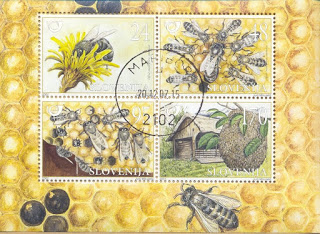Microbial pathogens are thought to have a profound impact on insect populations. Honey bees are suffering from elevated colony losses in the northern hemisphere possibly because of a variety of emergent microbial pathogens, with which pesticides may interact to exacerbate their impacts. To reveal such potential interactions, we administered at sublethal and field realistic doses one neonicotinoid pesticide (thiacloprid) and two common microbial pathogens, the invasive microsporidian Nosema ceranae and black queen cell virus (BQCV), individually to larval and adult honey bees in the laboratory. Through fully crossed experiments in which treatments were administered singly or in combination, we found an additive interaction between BQCV and thiacloprid on host larval survival likely because the pesticide significantly elevated viral loads. In adult bees, two synergistic interactions increased individual mortality: between N. ceranae and BQCV, and between N. ceranae and thiacloprid. The combination of two pathogens had a more profound effect on elevating adult mortality than N. ceranae plus thiacloprid. Common microbial pathogens appear to be major threats to honey bees, while sublethal doses of pesticide may enhance their deleterious effects on honey bee larvae and adults.
Source:
Vincent Doublet et al. Environmental Microbiology (2014) doi:10.1111/1462-2920.12426

- Log in to post comments
